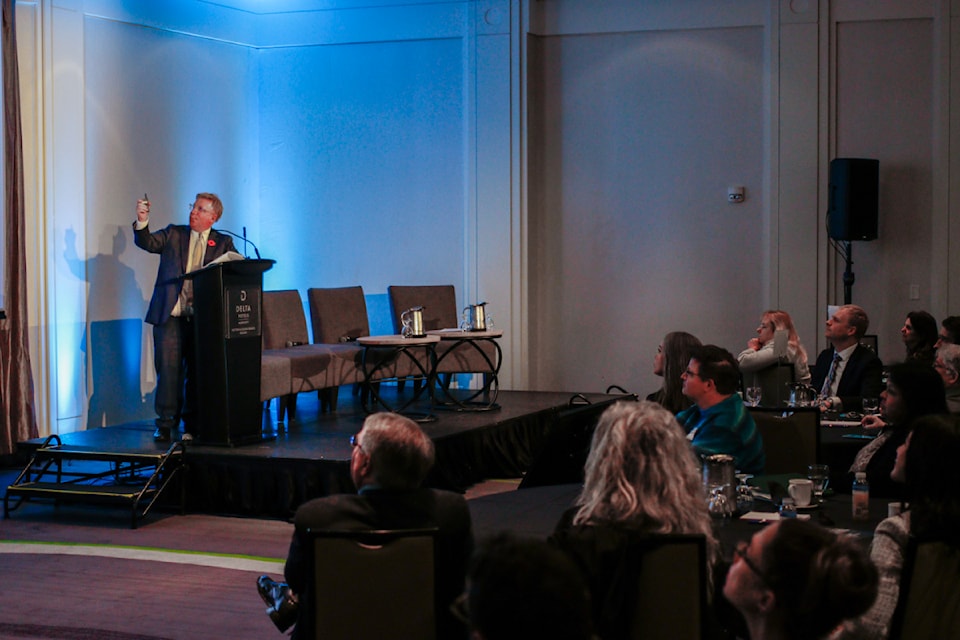Following a successful year for Victoria's visitor economy, Destination Greater Victoria has revealed their 10-year master plan which will outline the vision, goals and actions for the sustainable development of the visitor economy over the next decade.
The 2025-2035 Destination Master plan was unveiled to a crowd of elected officials, business owners and other stakeholders at the Delta Hotels Victoria Ocean Pointe Resort on Tuesday, Nov. 5.
“As Destination Greater Victoria does not own the assets and experiences of the local visitor economy, achieving the shared vision articulated in this plan will require a collective, community-wide implementation effort across multiple organizations and levels of government," noted Paul Nursey, CEO of DGV, in a news release. "It's essential for the region to continue developing its potential and elevate visitor experiences. With this plan, we have an exciting vision for the future that reflects the aspirations and priorities of individuals and organizations throughout the region."
According to data DGV released last week, the Capital Region welcomed 4.9 million visitors in 2023, which generated $3.5 billion in economic outputs and contributed $2 billion to the region’s GDP. They say the visitor economy has completely recovered from the effects of the pandemic.
The plan lays out five key strategic goals and objectives: to enhance tourism infrastructure, to create new attractions, events, and experiences, to emphasize placemaking, to augment connectivity and mobility, and to ensure continued sustainability and innovation.
To meet those goals, DGV has a number of initiatives they hope to put forward over the decade, including attracting or developing a signature annual winter event; developing and promoting unique neighbourhoods and their character; developing pathways and trails and shared multi-modal options that provide active
transportation options; and developing additional meeting, conference and hosting facilities, and increasing the region's hotel room inventory.
"We're all here today because we understand the incredible importance of the visitor economy and the visitor industry. But that also has to be balanced with the quality of life that's here for the people who live here, and both are referenced in this plan," said Victoria Mayor Marianne Alto.
Among the most significant issues to likely impede or constrain the visitor economy is the lack of available hotel inventory to meet the growing demand for
accommodations at different price points, noted the plan. The plan identified several potential initiatives to consider as part of the hotel development strategy, including developing an inventory of potential development sites; leveraging existing hotel companies to add secondary brands in the market; and increasing the speed of hotel development applications.
“Greater Victoria is globally recognized as a must-see destination that delivers world-class experiences while thriving in alignment with local community values and the natural environment,” said Nursey. “Despite our continued success, our growing visitor numbers, and accolades, like being recently voted the Best Small City in the World by Condé Nast Traveler for a second consecutive year, there is work to do to stay ahead of the competition."
Another notable recommendation from the plan is to explore conference centre expansion options, as the plan noted the Victoria Conference Centre’s current size and configuration constraints "significantly limits the ability to grow larger group business and excludes DGV from bidding on most association group business events."
According to a release, Victoria International Airport is forecasting three per cent annual increases in passenger traffic from 2025, culminating in three million passengers by 2040. Greater Victoria’s international ferry services say they regained pre-pandemic traffic levels last year, and are forecasting three to four per cent increases in demand over the next several years.



